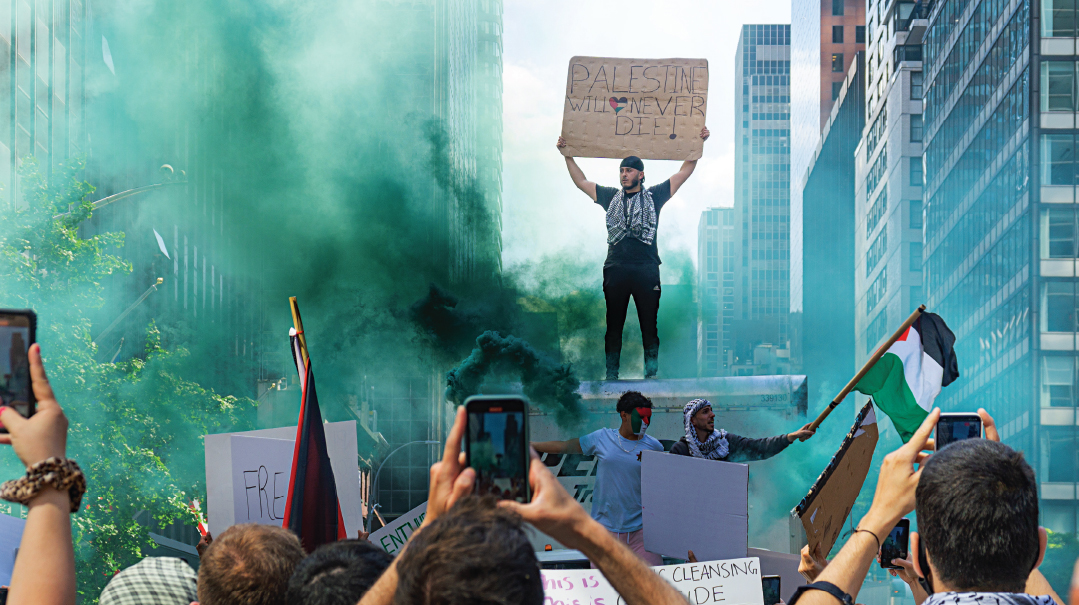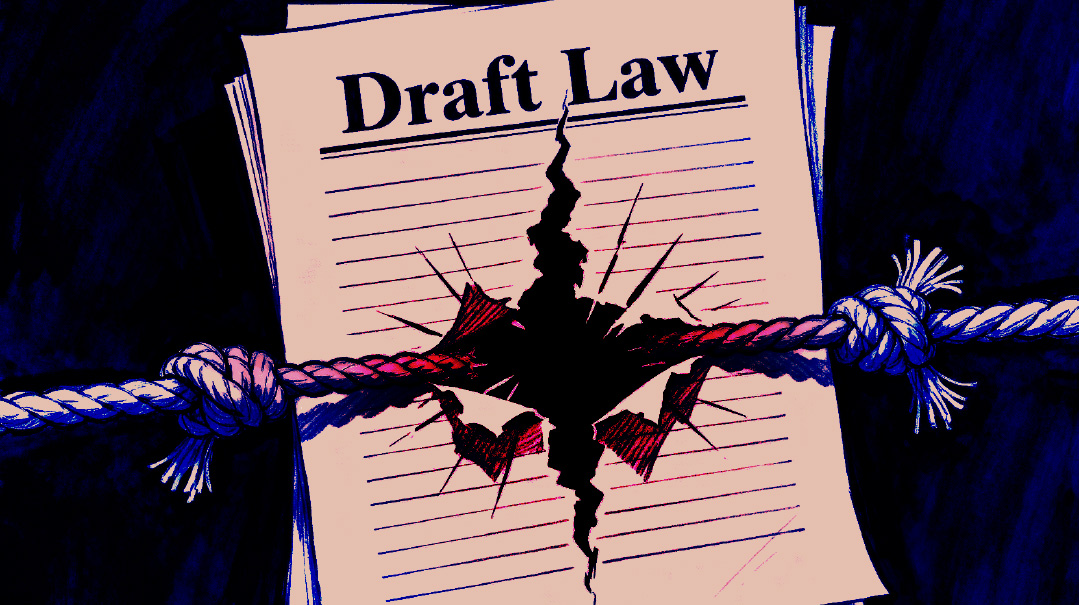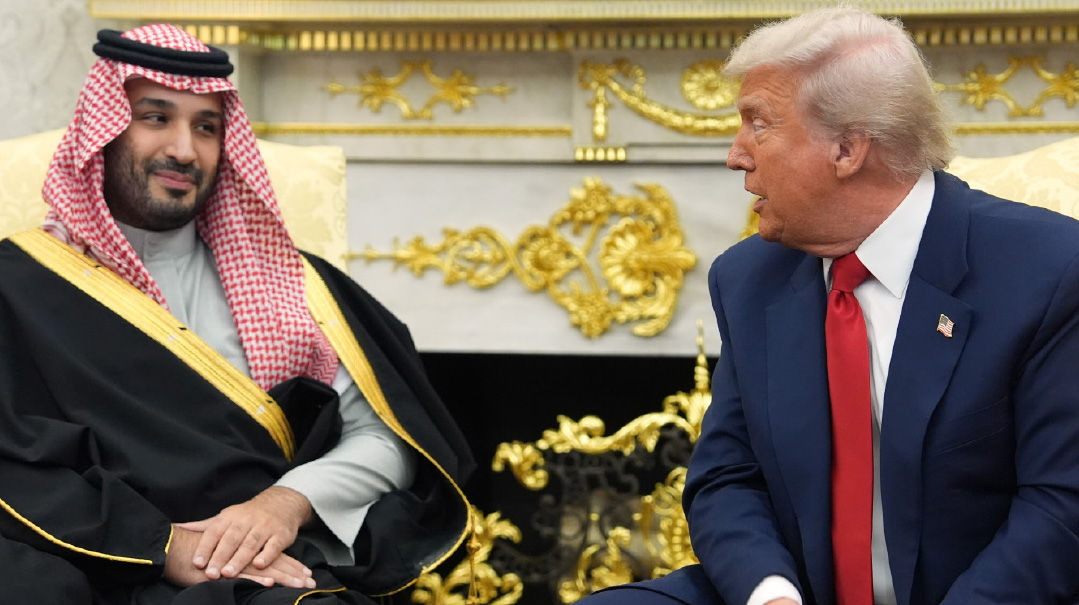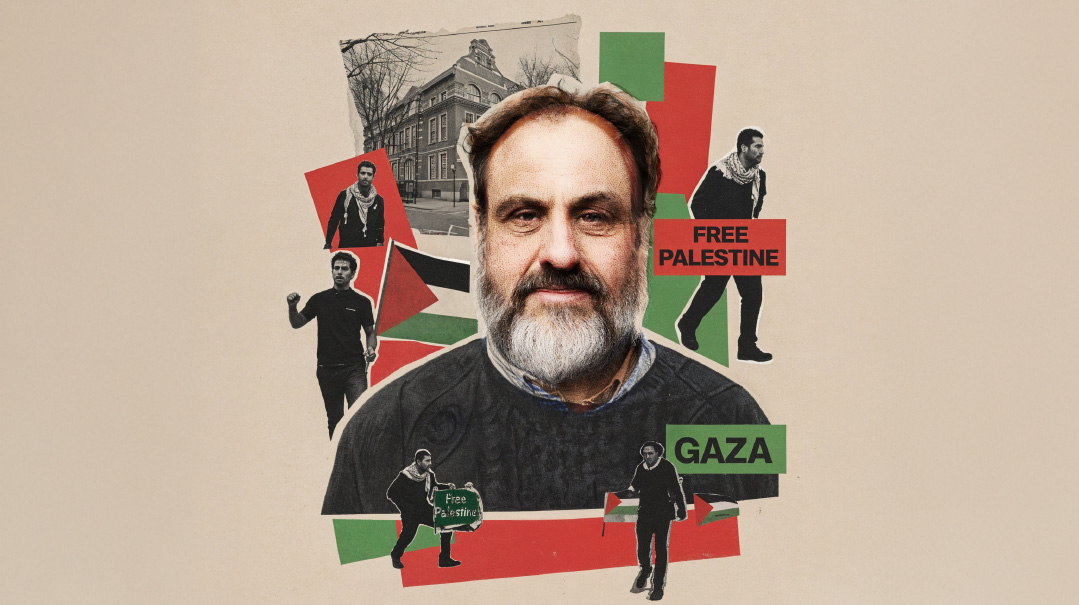From Gaza with Hate

How social media brought Gaza to Manhattan. A chilling report

With reporting by Yochonon Donn
For 11 days as Israel defended itself from a murderous aerial assault, Jews from Los Angeles to London, Toronto to Berlin were intimidated and beaten. In the week after the crisis began, the ADL reported 193 incidents of Jew-hatred, up from 131 the previous week. In a notable escalation from previous rounds of Gaza conflict where genocidal chants of “From the river to the sea, Palestine will be free” were heard in city centers, this time marauding pro-Palestinians actively sought out Jewish victims, often in residential areas.
One high-profile case was that of Joseph Borgen, 29, a Long Island resident who was heading to a pro-Israel rally in Manhattan last Thursday when he was set upon in front of the Diamond District. College student Waseem Awawdeh, 23, and a gang of other pro-Palestinian protesters attacked him without warning, beating him repeatedly, with Awawdeh kicking him in the face and ribs.
The near-lynch was just one of the anti-Semitic attacks in America that set social media alight. Earlier last week, Los Angeles experienced its own anti-Semitism scare. A man was seen on video running through the streets of Orthodox L.A., chased by two cars bearing Palestinian flags. Still shaking three days after the assault, he refused to allow his name to be printed. “If my name is out there, I’m dead meat,” he told Mishpacha. “These Palestinians, you never know what they can do.”
Thousands of miles away, London saw more anti-Jewish intimidation. A convoy of six cars draped in Palestinian flags drove through predominantly-Jewish Golders Green, yelling anti-Semitic threats. In the atmosphere of intimidation that followed, children were told to stay inside. The language was so extreme that when Home Secretary Priti Patel denounced the incident in Parliament days later, she wouldn’t quote it in full.
Jews overseas have always acted as a barometer for the state of Israel-Palestinian relations. When tensions flare, communities across the Western world feel the heat.
But in the boldness of these incidents as well as a host of smaller ones, anti-Semitism watchers detect a paradigm shift. No longer are university campuses and downtown rallies the sole focus of anti-Semitic attacks: Today, kosher restaurants in Manhattan and quiet communities in London are the new front line in the overspill of Gaza’s wars.
And even as Jews worldwide continue to bemoan the state of Israel’s PR effort in the face of mainstream media hostility, that criticism may be missing the mark. “The new fury that was felt on our streets was a result of social media,” says Dr. Dave Rich of CST, a British anti-Semitism watchdog. “The people responsible were not looking at legacy media outlets.”
So even as pro-Palestinian marchers fold their flags away and the end of the Gaza fighting reduces tension on the streets of New York and London, Gaza 2021 raises troubling questions for Jewish communities everywhere.
Can Israel’s creaking hasbarah machine — already struggling with an agenda-driven mainstream media — combat the social media deluge? What tools do social media companies need to deploy to combat the surge of bigoted content? And perhaps most urgent of all is whether this is the new normal: Is the Gaza frontline now just outside our homes?
Downtown Danger
Not since the Crown Heights Riots three decades ago has New York seen such a paroxysm of anti-Jewish hate. The beating in Manhattan that sent Joseph Borgen to the hospital was part of a wave that afternoon by protesters who invoked the Gaza violence as justification for their carnage.
Several blocks, away a Jewish woman suffered burns to her back when someone from a passing car carrying Palestinian flags threw a firecracker at her. Two Jewish boys standing in front of a police barricade were menaced by keffiyeh-wearing youths, with a policeman standing one foot away. It was only when one of the gangsters threw something at the boys that the cop jumped the barricades and gave chase. Police are still searching for the assailant.
Shloimie Gold considers himself lucky to have avoided a similar lynch. The Monsey resident hadn’t been in New York City for a while when he drove along the FDR Drive on Thursday afternoon.
“I was sitting at a red light when a car that was coming from the opposite direction slowed down and the window opened,” Gold recounted. “They had Palestinian flags hanging from the car. Four guys looked at me and jumped out of the car and started screaming at me.”
An NYPD police van waiting in traffic right behind Gold turned on its sirens and the four guys ran back into their vehicle and fled. Gold says they are likely different than the ones who attacked the Jews in Times Square since the latter arrived at the scene on bicycle.
“I did not realize what could have happened,” Gold said. “It was not until I got back to Monsey and heard about what happened at Times Square that I got frightened.”
The attacks continued on the Upper East Side, where a teenager said that he was beaten up by pro-Palestine protesters after he raised his Israeli flag. He was hospitalized with a concussion and injured jaw.
On Boro Park’s 18th Avenue and Ocean Parkway, two Jewish teens were surrounded by six men wielding baseball bats who demanded that they chant “free Palestine.” They then began beating the pair — who were saved by a Muslim Uber driver who drove them to safety.
Chaskel Bennett, a community activist, tweeted that night that “The place we’ve called home now has marauding thugs driving through the streets Jew Hunting [and] nobody seems to [care]. We heard stories like this from our grandparents who fled unbearable anti-Semitism.”
The next morning, Agudath Israel placed an urgent request to speak to Mayor Bill de Blasio and pass on the concerns of the city’s Jewish community. The mayor, who has been criticized for his slow reaction to hate against the Orthodox community in the past, agreed immediately.
“The request came in at 10:30 a.m. and by 2:30 we were sitting in his office,” Bennett told Mishpacha. He characterized his speech to de Blasio as this: “Mr. Mayor, I’ll say it straight. I am the voice of the thousands of people who don’t have the chance to tell this to you. Mothers are worried and people are scared for their safety.”
“It’s a horrible and consistent pattern,” the mayor replied. “We take it seriously, because if we don’t, it’s at all of our peril.”
A noticeably larger police presence was evident across Boro Park over Shabbos, but the number of attacks were still at a record high. In Boro Park and Flatbush, there were close to a dozen incidents.
And despite city officials vowing to crack down on the wave of hatred, the revolving doors of liberal justice released Manhattan attacker Waseem Awawdeh back on to New York’s streets. Even after telling prosecutors that “If I could, I would do it again,” he was released on bail. He was captured on video hoisted on his friend’s shoulders as people cheered him, “You are our hero!” and “Free Free Palestine.”
Lawless in L.A.
In an indication that a line has been crossed in America, the same pattern of violence repeated itself in Los Angeles.
The widely viewed video of a man fleeing from cars with Palestinian flags was from an incident that took place on the second night of Shavuos. The visibly-Jewish victim was walking from Rosewood Avenue to La Brea Avenue to go to shul for Maariv when he saw what he described as “a whole mob of about 25 cars,” which were coming from a protest outside the Israeli consulate.
“I didn’t think it was anything,” the man, 33, who requested anonymity, recalled. “When the light turned green and I was crossing the street, I saw out of the corner of my eye a Palestinian flag sticking out of one of the cars. I said to myself, ‘Ribbono shel Olam, what is going on here?’ I started walking a little quicker, but as soon as I turned the corner, they started following me, chanting ‘Allah Akbar’ and I started running for my life.”
With the entire convoy of cars giving chase, he ran into a bank’s parking lot, with the “Allah Akbar” chant audible from the passengers.
“I don’t know if they were trying to run me over or scare me. But in my dictionary, if an Arab says ‘Allah Akbar’ it is like a leshem yichud to kill someone or beat them up. I said Shema Yisrael and ran into a shul.”
The man ran home after davening and a non-Jewish neighbor called the police. “This is the center of the Yiddishe neighborhood,” said the man, who was born and lives in the area with his family. “This never happened before.”
Convoy of Hate
The tens of thousands of keffiyeh-wearing, Palestinian flag waving demonstrators who turned out in central London on Sunday this week for the “Free Palestine” march were a terrifying enough sight.
But the really chilling sight took place a week before on Erev Shavuos, when a small convoy of cars made their way around London. Shouting expletives and calling for violence against Jews, the passengers drove down Golders Green Road and Finchley Road, two major arteries that bisect the major Jewish communities of North-West London.
The savagery of the verbal abuse ensured that footage of the incident made national news, and four people were arrested and charged with hate speech.
But while in custody, it emerged that the gang had actually driven four hours south from Manchester, where earlier in the day they’d terrorized the large Jewish community — and not just verbally.
“The identities of these people haven’t been released because it’s an ongoing investigation,” said a local source. “But I myself saw these same people driving the same BMWs up and down Cheetham Hill Road, a main local road near the frum area, with Palestinian flags. Later on, they pursued a car with two Jewish teens flying an Israeli flag and boxed the car in and smashed its windows before the teens got away.”
Low-level anti-Semitic incidents coming from Britain’s Muslim population have been a fact of life for two decades now, as have surges connected to Gaza fighting. But what feels different, says the CST’s Dave Rich, is both the intensity this time and the fact that it was directed at local Jewish communities.
“It’s too early to compare numbers of incidents between this and previous Gaza flare-ups,” he says, “but incidents are roughly five times the average when there’s no conflict. Besides for this convoy, the most serious incident was a rabbi who was beaten in Chigwell, Essex on anti-Semitic grounds. ”
“Although most incidents have been verbal abuse, it does feel that levels of anger are very extreme, and coming into Jewish neighborhoods is an escalation, which is down to social media. In the 2009 conflict, there were similar anger levels, but information didn’t spread so quickly because social media was not as pervasive back then.”
Social Menace
The challenge posed by social media on both sides of the Atlantic is hard to quantify given that it exists across multiple platforms and is often out of sight on encrypted chat groups such as WhatsApp.
In one example, the ADL documented more than 17,000 tweets in just the second week of May that used variations of the phrase, “Hitler was right.” The foghorn-effect of being able to reach vast numbers of people was illustrated by high-profile Democrat Alexandria Ocasio-Cortez’s tweet that “Apartheid states aren’t democracies,” — a clear delegitimization of Israel — which was liked by 327,000 people.
Social media also gives ordinary people a platform to share their twisted views with a larger public. When Shomrim and CST volunteers detained a Muslim man last Friday in Golders Green for threatening passersby, one Twitter user reposted the picture with the caption “British Jews vigilante group attacking Muslims.”
But even without smoking guns showing a link between online haters and their real-world actions, it’s clear that social media is driving a new level of anti-Semitism. “Social media links people in the West up directly with what’s happening in Gaza and amplifies those events,” says Dave Rich. “Seeing clips of the convoy to London on the same social media, then adds to the Jewish community’s worry about what’s happening. That’s why this round has affected a lot of schoolchildren who are now exposed to these channels.”
As IDF foreign media spokesman from 2012 until 2017, Lt. Col. (res.) Peter Lerner had to contend with the rise of social media as a factor on the information battlefield. What defines this arena, he says, is that numbers dictate success. “Social media by definition works by building connections, and the pro-Israel community simply has far smaller numbers than our detractors. Social media also amplifies extremist ideas, which can then be translated into violent action, like attacking Jews in a Manhattan restaurant.”
Israel, as befits a so-called “Start-Up Nation,” was an earlier mover in harnessing social media to tell Israel’s story, with IDF official channels racking up hundreds of thousands of followers. But according to Vox, a left-leaning website, that edge slipped in the recent conflict as the Palestinian narrative pulled ahead “eroding Israel’s edge in the battle of perspectives and gaining a rapt audience in the US.”
As social media grows ever more central in shaping narratives, the loss of Israel’s edge matters more. According to a Pew survey from 2020, social media use doubled over the course of Israel’s four Gaza wars. In 2009, only 36% of Americans were social media users. By 2020, that had risen to 72%. And the number of people whose primary news source is social media is rising all the time: among the 18-29 year-old cohort, that stands at 42%, with online news sites next at 28%.
During the current round of violence, a host of celebrities from the worlds of fashion, movie-making, and sports — not to mention “celebrity politicians” — joined the fray. Speaking in the terse language and with the moral certainty that social media rewards, they shared their takes on the crisis with tens of millions of followers, many of them young and eager to be part of the group dynamic of these social networks. In this medium, where space is limited and nuance absent, bold statements and broad categories often mean painting entire groups of people as oppressed or oppressors, evil or deserving of sympathy, and once those seeds are sown, a call to action will have many more willing followers.
All of that has made a successful social media strategy a matter of strategic importance for Israel. Whether in selling a phone or a political narrative, social media success depends on the ability to tell a clear, simple story. Powerful memes – pictures with captions – and short videos are the coin of the realm. Nuance and context are excess baggage.
In that environment, Israel is at a disadvantage. When a Palestinian tweeted a picture of a little girl with the caption “Killed by Israel,” it was retweeted dozens of times by users heartbroken at the senseless murder of a child. Then a Gulf Arab account found that the picture was actually of a little Russian girl, thousands of miles from the fighting, but by then the damage had been done. It was a classic case of social media’s power to arouse emotion, with no fact-based constraints demanded.
Saturated with visual content, the key to social media success, says Lerner, is a fast response time. “When Israel bombed a tower in Gaza, it took too long to get out the explanation for why it was necessary.” The other key is to use emotional and human content. “You need a clear informative message and to use real people telling real stories about their world.”
But even as he admits that social media is key to Israel’s image war, the former IDF spokesman warns against underinvesting in traditional media.
“Mainstream media still sets the tone for public debate, and underinvesting in relationships with editors and journalists comes at a cost to Israel.”
Media Bias
Gaza’s 13-story Jala Tower, now a heap of rubble after an Israeli airstrike in the latest round of conflict, is a good reference point to understand media bias against Israel.
The strike that collapsed the building two weeks ago set off a media firestorm about the media itself. Based on intelligence that the building contained Hamas offices, the IDF warned that it was about to be bombed, and an hour later — when it was empty — the air force levelled it.
Unfortunately for Israel’s international image was the fact that the offices of AP, a major global news source, were also housed in the tower block. Predictably as dust hovered over the building, press groups worldwide condemned Israel for attacking the free press, with AP implying that it was done to limit media oversight of Israel’s activities.
But it was from those very offices that back in 2014, AP themselves had become something of a notorious symbol of media bias, knowingly covering up evidence of Hamas using civilians as human shields.
In a landmark 2014 Atlantic essay, former AP Jerusalem bureau chief Matti Friedman exposed the bias that he himself had witnessed.
“When Hamas’s leaders surveyed their assets before this summer’s round of fighting,” Friedman wrote in a stinging denunciation rejected by AP, “they knew that among those assets was the international press. The AP staff in Gaza City would witness a rocket launch right beside their office, endangering reporters and other civilians nearby — and the AP wouldn’t report it, not even in AP articles about Israeli claims that Hamas was launching rockets from residential areas. Hamas fighters would burst into the AP’s Gaza bureau and threaten the staff — and the AP wouldn’t report it.”
“Cameramen waiting outside Shifa Hospital in Gaza City,” continued Friedman, “would film the arrival of civilian casualties, and then, at a signal from an official, turn off their cameras when wounded and dead fighters came in, helping Hamas maintain the illusion that only civilians were dying.”
Asked whether AP could have been unaware of Hamas offices in the same building, Peter Lerner warns against assuming that the journalists did in fact know who shared their complex but then adds his own experience.
“In the 2014 war,” he says “I got a call from AP saying that they could see a rocket launch team nearby and asking that I tell the Air Force not to bomb them as they would be affected. I told them that I’d pass on their message, but said ‘what are you doing there anyway?’ ”
Although Lerner won’t be drawn into saying which media outlets are more biased against Israel than others, he says that the framework in which Israeli hasbarah operates assumes that Israel can’t win the media battle.
“In this day and age, conflict is generally frowned upon by the West, who put a lot of faith in diplomacy as a way of resolving conflicts,” Lerner explains. “Unfortunately, these people don’t understand the realities of the Middle East, which is why communicating Israel’s wars is extremely difficult.”
Given the uphill media struggle that Israel faces, Lerner says that the country’s strategy isn’t to ‘win’ the media war. “I have no expectation that the world media — which is fascinated by the far more compelling picture of human suffering on the Palestinian side — will applaud Israel for defensive measures. The goal of our communications is to give Israel the room it needs to implement military goals, by keeping democratic governments onside.”
With this more modest goal in mind, Peter Lerner says that Israel has been successful, despite the common refrain of failing the PR test. “In 2014, the world largely understood that we had to have a lengthy campaign to root out the tunnels. This time we had more limited military goals, and most democratic countries accepted that as well.”
What Can Be Done
As the battle dust dissipates from Gaza’s skies and Hamas pick over the ruins of their ruined tunnel complex, the picture of Israel-related anti-Semitism is becoming clearer. The scores of unrelated hate attacks — both verbal and physical — in different locations worldwide tell a story of an escalation in anti-Semitism that is hitting ever closer to home for visibly-Jewish communities.
On the political level in the US, Senators Tom Cotton of Arkansas and Mitch McConnell of Kentucky have introduced the Preventing Anti-Semitic Hate Crimes Act patterned after the Anti-Asian Hate Crimes Bill that was recently signed into law by President Joe Biden. The senators noted the FBI reports that more than 60 percent of all hate crimes against religious groups in the country are directed against Jews. Time will tell whether the Republican-sponsored initiative passes a Democrat-controlled House.
In the UK as well, notes Dave Rich, the anti-Semitic attacks received major coverage from both right and left. “Anti-Semitism became a big issue in the Corbyn years and commands media attention in a way we weren’t used to five or ten years ago,” he says. “And the police response has been good, increasing patrols in our communities. What we now need is for the perpetrators to be prosecuted to send a strong message.”
But when it comes to social media, the great ocean in which extremism swims unchecked, there needs to be a sea change.
“The hate spread online is not about free speech, and it needs to be checked by law enforcement,” says Peter Lerner. “The social media companies like to think of themselves as neutral platforms, but they have a huge responsibility to stop the flow of hate when it becomes obvious that it can spill over onto the streets.”
“Facebook have done quite a bit to curb that influence, but they are currently the only social media platform actively seeking to remove en masse the hate material that gets posted. Twitter is failing, and YouTube is even worse.”
“These giants,” concludes Lerner, “have the resources to change things, but they need motivation to act.”
Until that happens, the next flare-up with Hamas could once again turn Jewish neighborhoods into another frontline in Gaza’s endless wars.
(Originally featured in Mishpacha, Issue 862)
Oops! We could not locate your form.













